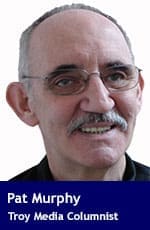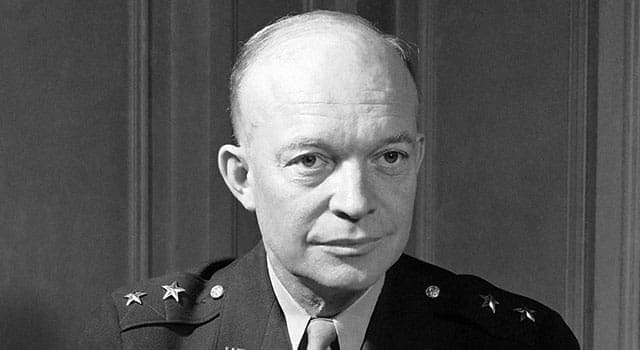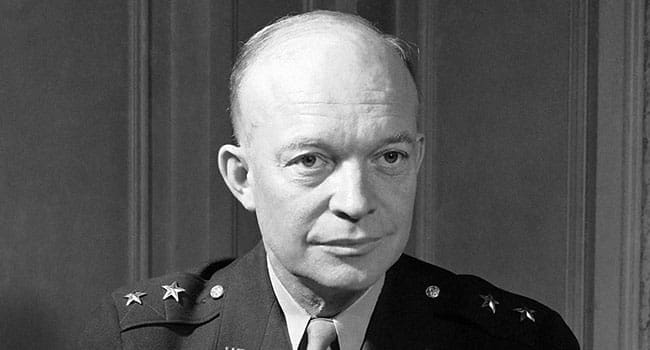His quiet diplomacy secured Paris for de Gaulle and reshaped France’s future

For interview requests, click here
Dwight Eisenhower was an American president whose academic reputation improved with the passage of time. But it was once fashionable to describe him as a “bumbler,” someone whose political success could only be explained by a combination of his amiable personality, his status as Supreme Allied Commander during the Second World War, and the American electorate’s general lack of sophistication.
Political scientist Fred Greenstein initially shared that view, teaching his students that Eisenhower “lacked the leadership qualities to be an effective president.” Then he changed his mind. His The Hidden-Hand Presidency (1982) was instrumental in starting to shift academic opinion.
I was reminded of this while reading Patrick Bishop’s Paris 1944. As Bishop tells it, Eisenhower’s political wiliness preceded his sojourn in the White House. You could make the case that his ability to discreetly “work the system” played a key role in making Charles de Gaulle the first leader of post-war France.
 Eisenhower’s strategic brilliance was once overlooked by historians. |
| Recommended |
| What we can learn from the fall of Carthage
|
| The Manhattan Project’s indispensable man
|
| Who was to blame for the First World War?
|
For a small-town boy born in 1890 Texas and raised in Abilene, Kan., Eisenhower was more cosmopolitan than you’d think. He’d spent 14 months in Paris during the late 1920s, spoke passable French and had acquired a personal feel for the complex dynamics of the country’s politics. This set him apart from the other senior Allied commanders.
Although de Gaulle was the acknowledged leader of the exiled Free French forces, Franklin D. Roosevelt—the incumbent American president—wasn’t a fan. Rather than anoint de Gaulle as the leader of a liberated France, Roosevelt wanted to leave France under the Allied Military Government until elections could be arranged.
Given his sense of French political exigencies, Eisenhower disagreed. But he’d need to proceed carefully. Directly taking on Washington wouldn’t be smart.
In late 1943, Eisenhower privately assured de Gaulle on two points. First, he would “recognize no French power in France other than your own.” And second, Free French troops would take the lead in the eventual liberation of Paris.
The first point was further expanded in a May 25, 1944, Eisenhower directive to American and British commanders: “Military government will not be established in liberated France… the French themselves will conduct all aspects of civil administration in their country, even in areas of military occupation.”
The second reflected Eisenhower’s understanding of the symbolic importance of Paris in the French imagination. As the saying goes, “He who controls Paris controls France.”
In effect, Eisenhower was doing an end run around Washington. He would facilitate events to situate de Gaulle as the de facto leader of liberated France.
While the June 6, 1944, D-Day landings were essentially an American, British and Canadian operation, care was taken to underline the legitimacy of de Gaulle’s position. After Bayeux had been formally liberated by the British on June 7, the Americans arranged to get him there.
Accordingly, de Gaulle made his triumphal entry to Bayeux on June 14 and the town became the temporary national capital. Bishop puts it this way: “With his visit, he was starting to take ownership of the invasion and establish the right of the Free French to represent the future of France.”
Eisenhower helped again later that summer.
The Allies’ initial plan was to bypass Paris and focus on pushing the Germans back across the Rhine. Paris could wait.
But as the summer progressed, the city became a tinderbox. Internal resistance was increasingly overt and the prospect of a repeat of the Warsaw Uprising—with its attendant slaughter and destruction—acquired increasing salience. And to the extent that the Germans abandoned the city, it would succumb to starvation and civil war.
So de Gaulle turned to Eisenhower. Plans should be changed and Paris should be taken as soon as possible. Eisenhower agreed. There was, however, the delicate matter of getting his superiors in Washington to go along.
Bishop is effusive in his account of Eisenhower’s wiliness: “The cable he composed was a masterpiece of subtlety. He hid his intention in a cloak of detail … The question of Paris took up only five of the 35 sentences.” To all intents and purposes, he was presenting Washington with a done deal.
As per Eisenhower’s earlier promise, the Free French were given the honour of leading the way. A vanguard penetrated the city on the evening of Aug. 24; a larger force—supported by the Americans—entered the following morning; the Germans officially surrendered early in the afternoon; and de Gaulle personally arrived an hour or so later. Courtesy of Eisenhower, Paris had been handed to him on a plate.
Dwight Eisenhower was many things. “Bumbler” wasn’t one of them.
Troy Media columnist Pat Murphy casts a history buff’s eye at the goings-on in our world. Never cynical – well, perhaps a little bit.
Explore more on Second World War, History books, History
The views, opinions, and positions expressed by our columnists and contributors are solely their own and do not necessarily reflect those of our publication.
Troy Media is dedicated to empowering Canadian community news outlets by providing independent, insightful analysis and commentary. Our mission is to support local media in fostering an informed and engaged public by delivering reliable content that strengthens community connections, enriches national conversations, and helps Canadians better understand one another.

